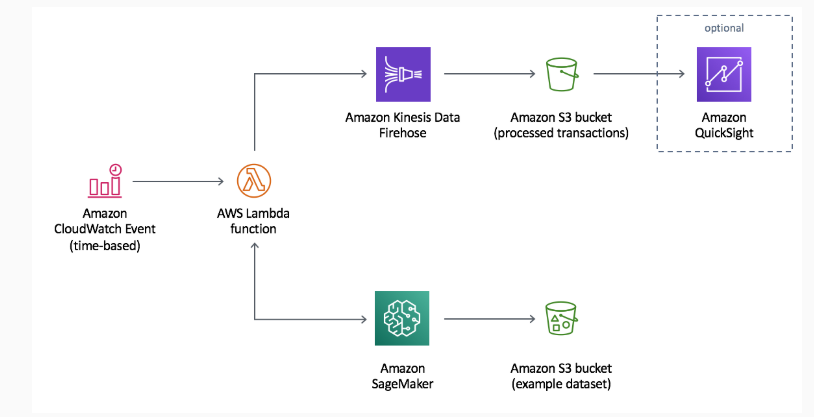Utilizing Date-Time Stamp for Improved Fraud Prediction
Question
You work for a financial services firm that wishes to enhance its fraud detection capabilities further.
The firm has implemented fine-grained transaction logging for all transactions their customers make using their credit cards.
The fraud prevention department would like to use this data to produce dashboards to give them insight into their customer's transaction activity and provide real-time fraud prediction. You plan to build a fraud detection model using the transaction observation data with Amazon SageMaker.
Each transaction observation has a date-time stamp.
In its raw form, the date-time stamp is not very useful in your prediction model since it is unique.
Can you make use of the date-time stamp in your fraud prediction model, and if so, how?
Answers
Explanations
Click on the arrows to vote for the correct answer
A. B. C. D.Answer: C.
Option A is incorrect since you can use the date-time stamp if you use feature engineering to transform the data point into a useful form.
Option B is incorrect since this option is really just another way of ignoring, thus not using, the date-time stamp data point.
Option C is correct.
You can transform the data point using feature engineering and thus gain value from it for the learning process of your model.
(See the AWS Machine Learning blog post: Simplify machine learning with XGBoost and Amazon SageMaker: https://aws.amazon.com/blogs/machine-learning/simplify-machine-learning-with-xgboost-and-amazon-sagemaker/)
Option D is incorrect since we can transform the data point into unique features that represent the hour of the day, the day of the week, and the month.
These variables could be useful to learn if the fraudulent activity tends to happen at a particular hour, day of the week, or month.
Diagram:
Here is a screenshot from the AWS Machine Learning documentation depicting a typical fraud detection machine learning solution:
Reference:
Please see the Amazon Machine Learning developer documentation:
https://docs.aws.amazon.com/machine-learning/latest/dg/feature-processing.html.
The answer is C. Yes, you can use the date-time stamp data point. You can transform the date-time stamp into features for the hour of the day, the day of the week, and the month.
Date-time stamps can be a useful feature in fraud detection models, as they can help identify patterns and anomalies in transaction activity. However, in their raw form, date-time stamps can be difficult to work with because they are unique for each transaction.
To make use of the date-time stamp, it can be transformed into more useful features, such as the hour of the day, the day of the week, and the month. For example, a transaction that occurs at 2:00 AM on a Sunday might be more suspicious than a transaction that occurs at 2:00 PM on a Wednesday.
Transforming the date-time stamp into these features allows the model to identify patterns and anomalies based on the time of day, day of the week, and month. These features can then be used as inputs to the model, along with other transaction data, to predict the likelihood of fraud.
Feature selection, as mentioned in answer B, may not be the best approach in this case, as the date-time stamp can provide valuable information for the model. Additionally, answers A and D are incorrect, as the date-time stamp can be transformed into useful features for the model.